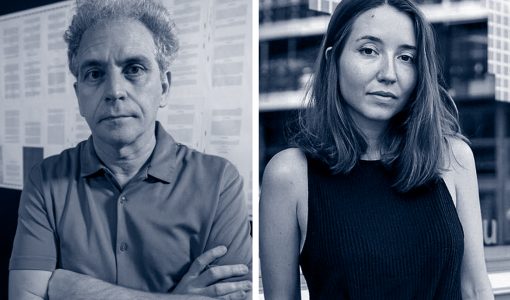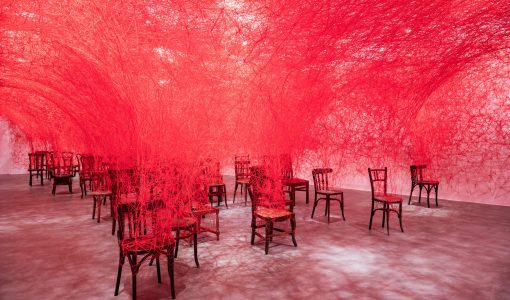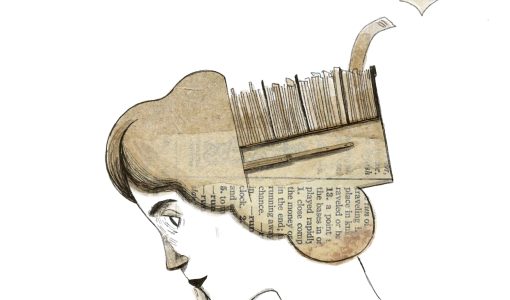
F.X. Archive: The Empty City
Home
›
Exhibitions
›
F.X. Archive: The Empty City
A Project by Pedro G. Romero.
www.fxysudoble.org/
This project is an approach to the political construction of the modern city designed to show the relation between the behaviours and forms of our community and the iconoclastic gesture. The axis of this approach is the exhibition project F.X. Archive: The Empty City. Community. Three complementary projects are structured around that axis, Surroundings, Eccentrics and Subterraneans, which complement the view of the construction of the modern project set out in Archive F.X. from different fields.
F.X. Archive: The Empty City
F.X. Archive revolves around the taxonomies and classifications that relate language and reality. The base for these operations is a vast archive of images of antisacramental political iconoclasm in Spain between 1845 and 1945, images that are ordered according to a critical index of terms coming from the visual constructions of the broad field of the modern project. Since the late nineties work has been done, whether compiling images and documents which show the importance of the phenomenon in Spain from the late 19th to the mid 20th century, or activating an analysis of the subject through seminars or publications, or activating the importance of iconoclasm as a constituent element of the behaviours and forms of our Community from artistic, social and political practices.
Over that time an intense archaeological task and numerous experiments have been carried out on the different operations performed by iconoclasm in order to legitimise, in a way, a substantial part of our perception of reality. These tools provide a theoretical and practical abundance of approaches to the world which F.X. Archive now wants to apply to our most immediate environment.
F.X. Archive: The Empty City, presents an approach to the political construction of the modern city, just as an F.X. Archive: Pure Violence about the social management of fear, or F.X. Archive: Economy Zero about the cultural meaning of expense are in preparation.
After two years’ work on visual constructions and iconoclasm, sacred spaces and their profanation, F.X. Archive: The Empty City has developed a specific series of tools which it proposes to apply to the present, a kind of set of instruments with which to begin to urbanise the province of nihilism. Works of representation in the visual arts have often been politically linked to the city limits, the conceptual shores where the most overt political conflicts occur – pockets of marginality, new citizens, renewal of the forms of work, new urban developments, etc. -, generally causing redundancies and cacophonies, if not excesses of rhetoric and tautological reiterations in the wake of that effort of the imaginary. The fact is that the very violence of any political conflict and its modern techniques of emergence and communication are already represented sufficiently and independently, with no need for any intermediation.
Our experiment takes place in the centre of the city – understood as the community, the niche in the world where we happen to live -, that empty city that has been deprived of its main political wisdom, taken as an example of a city where “nothing happens” or, to put it another way, a “depoliticised” city, i.e., where the “polis” has ceased to exist. Where we can see that empty city most clearly is in the outskirts, which is why we have chosen Badia del Vallès, the newest city in Spain, as our subject-object of knowledge. We thank Badia del Vallès for its transparency, but let us not deceive ourselves, the void we are talking about occurs in the very heart of the modern capitalist city.
Ciutat Badia or Badia del Vallès is a new city, a housing estate on the outskirts of Barcelona which is a significant indication of the problems of the modern city arising from the conversion of old quarters into theme parks and the postmodern scattering of the new residential areas, which speak of a different kind of town. The choice of Badia del Vallès as a site, as a field of operations, was due to a series of conditions – the heterogeneous origin of its inhabitants, a recent history, topographical closure, continuous rearrangement of its building, predominance of subsidised housing, festive season in construction, progress in residents’ associations, housing stage, selfmanagement of independence, etc. – among which the main one was expressed by the total absence of the marks – emigration, precariousness, speculation, etc. – which have been abused by contemporary aesthetic violence. As an indispensable guide on our incursions into Badia del Vallès we have used the work of Valentín Roma.
The paradox that arises when we observe the political power beating in the heart of the empty city – with no “polis”, i.e. with no politics – was the first indicator that assured us that Badia del Vallès would be our workplace.
The fact that the perimeter of the housing estate sketched by Badia del Vallès should represent the shape of the Iberian Peninsula and the layout and names of the streets – such as Algarve, Bética, Mediterránea, Menorca, etc. – should be perfectly suitable for this cartography, providing us with the metonymy to make Badia del Vallès the supreme city, was our second indicator.
The third emerged from a conversation at the headquarters of the Badia residents’ association, which also acts as the municipal funeral parlour, with the chairman Andrés Llantadas and his secretary, who minutes earlier had offered to sell us some lottery tickets. The conversation revolved around the problems of habitability of the city, of how the conversion of a housing estate given over to vertical shanty towns had constituted a residents’ Community and how that Community had been constructed from the different local struggles to open up accesses, improve staircases, lay floors, demand lifts, raise the standard of living. For those singular residents Badia came to life again every time its inhabitants went out on the street to demand something, making politics and making a city, and that was what, contradictorily, the municipal and general policies wanted to suppress, emptying the lives of their people of political content. And so our third indicator was activated, with special attention to the ways in which people, despite the nature of power to make our cities its Capital, had managed to make their own Community.
Moreover, in The Empty City we have had the assistance of Juan José Lahuerta, Enrique Vila-Matas and Manuel Delgado, who were invited to work in parallel to F.X. Archive, moving around the common spaces but also wandering off along different roads and alleys, and their works will be presented at a series of events: Surroundings – Juan José Lahuerta with the participation of Ángel González García, Francesc Muñoz, Itziar González Virós, Maria Rubert de Ventós, José Luis Oyón, Ivan Bercedo and Jorge Mestre -, Eccentrics – Enrique Vila-Matas with the participation of Justo Navarro, Antonio Molina Flores, Francisco Correal, Alfredo Valenzuela, José Antonio Garriga Vela and Laura García Lorca – and Subterraneans – Manuel Delgado with the participation of Gerard Horta, Deborah Fernández, Andrea Avaria, Marc Dalmau, Santiago Subirats, Teresa Tapada and Lucrezia Miranda.
Community
Community is the name under which the group of works done by F.X. Archive for The Empty City are presented. In a mise en scène which is drama and gesture at the same time, visual constructions of all kinds – images, pastimes, organisations, actions, participations, noises, language – are brought into play and administer a different way of uttering discourse in which the gestural values of the theatre subtract exhibition value from the works.
In that sense, the theatre is a tool with which to present the works as a “place composition”, acting as the choreography of a mental theatre. The point was to stage an archive and its functions with regard to the construction of the city. A commonplace imaginary refers us to those stage settings, from the emblematic old lady to the closing scene of Orson Welles’ Citizen Kane, for example, the archive “becomes” a city. A theatre and its double, giving the conjunction “and” the same values of demolition, of gutting, consigned to it by Antonin Artaud: “an instrument that does not separate but obliges the theatre to double reality.” For F.X. Archive that presentation space of the works seems like the place of places in that same way of doubling reality, but also of bowing to it, since giving each piece the value of a tool is also the outcome of that attempt to subtract exhibition value from each of the works.
And so, the statement “this is not an exhibition” may be inscribed as a frontispiece at the entrance to the room; not that it is a laboratory, nor a work in progress, nor a work in construction; it is the very nature of this work that makes it necessary to put the traditional exhibition space it uses in inverted commas. Although the space is constructed with the materials on show, they do not point to the finished work, their purpose is not that monument; rather it is to sketch intermediation operations, they rather make each thing a medium. The theatrical resource thus works as a containing wall, preventing the colonisation of spaces of reality which aesthetic violence ends up turning into capital.
The whole exhibition is portable, it can fit into a book, and that arrangement also works towards subtracting exhibition value from the things. The construction, the scaffolding of the whole city works in the opposite way to a theatre of memory, and so what it puts into play is rather an “art of forgetting” in the face of a totalising ars mnemonica, with the same critical sense Michel Foucault wanted to give the technology of the archive.
Etymologically, of course, the spectators of this exhibition make a Community in the sense that they receive the same communication. Stressing its polyphonic character in the montage is also part of the work of F.X. Archive. The visitors as inhabitants of the community are for a moment more actors than spectators. Although the public exhibition of all these works only intends to invite the visitors, the spectators, those actors to add their expectations, their attitudes, their gestures to the great work machine of F.X. Archive. Like real helpers, the visitors actors spectators of the exhibition have to find their “MacGuffin” with which to travel, leave traces, draw the floor and the air of the installation. And so in this text let us convene those helpers to act as guides at this exhibition, actors with whom to travel the scenario.
Dates
26.01.2006 – 16.04.2006
Artist
Pedro G. Romero.
Curator
Nuria Enguita Mayo.














